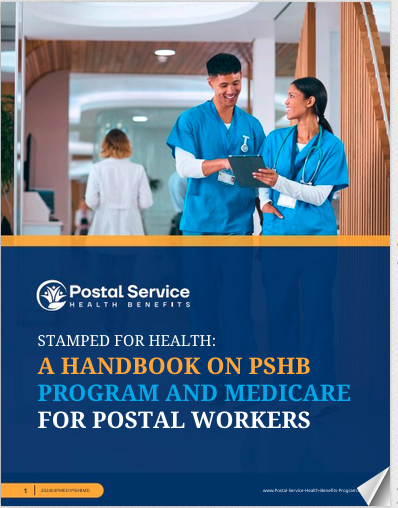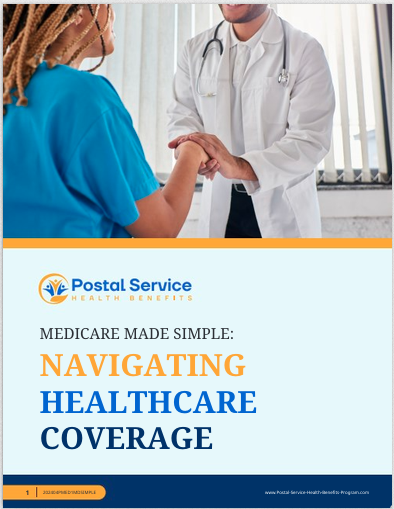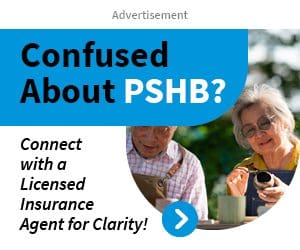Key Takeaways
- The Postal Service Health Benefits (PSHB) program, launching in 2025, will replace the Federal Employees Health Benefits (FEHB) for USPS employees, directly impacting the health coverage for their families.
- USPS employees need to understand the enrollment process and the specific differences between PSHB and FEHB to ensure continuous and comprehensive coverage for their dependents.
How PSHB Affects Health Coverage for Your Family as a USPS Employee
As a USPS employee, significant changes to your health coverage are on the horizon with the introduction of the Postal Service Health Benefits (PSHB) program, set to launch in January 2025. Understanding how PSHB will affect your family’s health coverage is crucial, as it will replace the current Federal Employees Health Benefits (FEHB) program for postal employees. The new PSHB program is part of broader legislative changes, specifically the Postal Service Reform Act (PSRA) of 2022, designed to address long-term financial challenges within the U.S. Postal Service (USPS). This article will guide you through the key aspects of PSHB, how it differs from FEHB, and what steps you need to take to ensure your family’s health coverage remains uninterrupted and comprehensive.
What is the PSHB Program?
The Postal Service Health Benefits (PSHB) program is a new healthcare program specifically designed for USPS employees and retirees. The program is scheduled to begin on January 1, 2025, replacing the Federal Employees Health Benefits (FEHB) program that has traditionally provided health coverage to postal workers. The establishment of the PSHB program is a key provision of the Postal Service Reform Act (PSRA) of 2022, which was enacted to stabilize the financial condition of the USPS.
Under the PSHB program, USPS employees, retirees, and their eligible family members will no longer be part of the FEHB program. Instead, they will transition to health plans under the new PSHB program. These plans are expected to be similar to those offered under FEHB but will be specifically tailored to meet the needs of postal workers and their families.
How Will PSHB Affect Your Family’s Health Coverage?
One of the most significant concerns for USPS employees and retirees is how the transition from FEHB to PSHB will affect their family’s health coverage. Understanding these changes is essential to ensuring that your dependents remain covered without any gaps in their healthcare.
Coverage Continuity
For many USPS employees, the primary concern is whether their family’s health coverage will continue seamlessly under the new PSHB program. The good news is that the PSHB program is designed to ensure continuity of coverage for both employees and retirees. If you and your family are currently enrolled in FEHB, your coverage will automatically transition to a comparable plan under PSHB unless you choose to select a different plan during the open enrollment period.
It’s important to review the new PSHB plans carefully to ensure they meet your family’s needs. While the plans are expected to be similar to those under FEHB, there may be differences in coverage, networks, and costs that could impact your family’s healthcare.
Enrollment Process
The enrollment process under PSHB will closely resemble that of FEHB, with an open enrollment period each year. However, there are key differences to be aware of. USPS employees and retirees must actively participate in the PSHB enrollment process to ensure their family’s continued coverage. Failure to enroll during the designated period could result in a lapse in coverage, which could be particularly problematic for families with ongoing medical needs.
Additionally, the transition to PSHB presents an opportunity to reassess your family’s healthcare needs and select a plan that best meets those needs. This reassessment is crucial, especially if your family’s situation has changed since you last selected a health plan under FEHB.
Differences Between PSHB and FEHB
While PSHB and FEHB share many similarities, there are some important differences that USPS employees should be aware of. Understanding these differences can help you make informed decisions about your family’s health coverage.
Plan Offerings
One of the key differences between PSHB and FEHB is the specific plan offerings. While FEHB offers a wide range of plans from various providers, PSHB will offer a more focused selection of plans specifically designed for postal employees. These plans will likely be tailored to address the unique health needs of USPS workers, which could include factors like occupational health risks associated with postal work.
While this specialized approach may offer benefits, it’s essential to carefully review the plan details to ensure they align with your family’s healthcare needs. For example, consider whether your preferred healthcare providers are included in the plan’s network and whether the coverage limits are sufficient for your family’s needs.
Premium Contributions
Another critical difference is how premium contributions will be handled under PSHB. The Postal Service Reform Act requires USPS employees to enroll in Medicare Part B when they become eligible, which will affect how healthcare costs are managed. For current employees and retirees, this means that your health benefits will be coordinated with Medicare, potentially lowering your out-of-pocket expenses. However, this also means that you will need to account for Medicare premiums in your overall healthcare budget.
Understanding how these changes will impact your family’s finances is crucial. For some families, the coordination with Medicare could lead to cost savings, while for others, it might result in higher overall costs, depending on your specific healthcare needs and how they are covered under PSHB.
Access to Healthcare Providers
The PSHB program is expected to offer a network of healthcare providers similar to those available under FEHB. However, since PSHB is a new program, it’s essential to verify that your current healthcare providers are included in the network of your chosen plan. If your family’s preferred doctors and specialists are not covered, you may need to select a different plan or consider changing providers, which could disrupt your family’s continuity of care.
Key Dates and What You Need to Do
As the transition to PSHB approaches, there are several key dates that USPS employees should be aware of to ensure a smooth transition for their family’s health coverage.
January 2025: Official Launch of PSHB
The PSHB program is set to launch on January 1, 2025. This date marks the official end of FEHB coverage for USPS employees and the beginning of coverage under PSHB. It’s crucial to have your new plan in place by this date to avoid any gaps in your family’s health coverage.
Open Enrollment Period
The first PSHB open enrollment period will occur in the fall of 2024, prior to the program’s launch. During this period, USPS employees and retirees will need to select a health plan under the PSHB program. It’s important to review your options carefully and make your selection during this period to ensure your family’s coverage is in place for the start of 2025.
Preparing for the Transition to PSHB
Preparing for the transition to PSHB requires careful planning and attention to detail. Here are some steps you can take to ensure your family’s health coverage remains secure:
- Review Your Current Coverage: Take the time to review your current FEHB plan and assess your family’s healthcare needs. Consider factors such as ongoing medical conditions, prescription drug needs, and preferred healthcare providers. This will help you select a PSHB plan that meets your needs.
- Attend USPS Information Sessions: The USPS is expected to offer information sessions and resources to help employees understand the transition to PSHB. Attending these sessions can provide valuable insights into the new program and help you make informed decisions about your family’s coverage.
- Consult with a Licensed Insurance Agent: Navigating the transition to PSHB can be complex, especially when coordinating benefits with Medicare. Consulting with a licensed insurance agent who specializes in federal employee benefits can help you understand your options and ensure your family’s coverage is optimized.
- Mark Key Dates on Your Calendar: To avoid any lapses in coverage, mark the key dates related to the PSHB transition on your calendar. This includes the open enrollment period in 2024 and the program’s official launch in January 2025. Staying organized will help you navigate the transition smoothly.
What to Expect in the Future
As the USPS transitions to the PSHB program, it’s important to stay informed about any updates or changes that may affect your family’s health coverage. The USPS and the Office of Personnel Management (OPM) are expected to provide ongoing communication about the program, including any changes to plan offerings, premium contributions, and enrollment processes.
Staying informed and proactive is the best way to ensure your family’s health coverage remains comprehensive and uninterrupted. By understanding the differences between PSHB and FEHB, reviewing your options carefully, and taking advantage of the resources available to you, you can make the transition to PSHB with confidence.
Looking Ahead to 2025 and Beyond
As 2025 approaches, USPS employees will need to be vigilant in managing their family’s health coverage. The transition to PSHB represents a significant change, but with careful planning and attention to detail, you can ensure that your family’s healthcare needs continue to be met. By staying informed, participating in the enrollment process, and consulting with experts as needed, you can navigate this transition successfully and secure the best possible coverage for your family under the new PSHB program.
Contact Information:
Email: [email protected]
Phone: 2065551234







